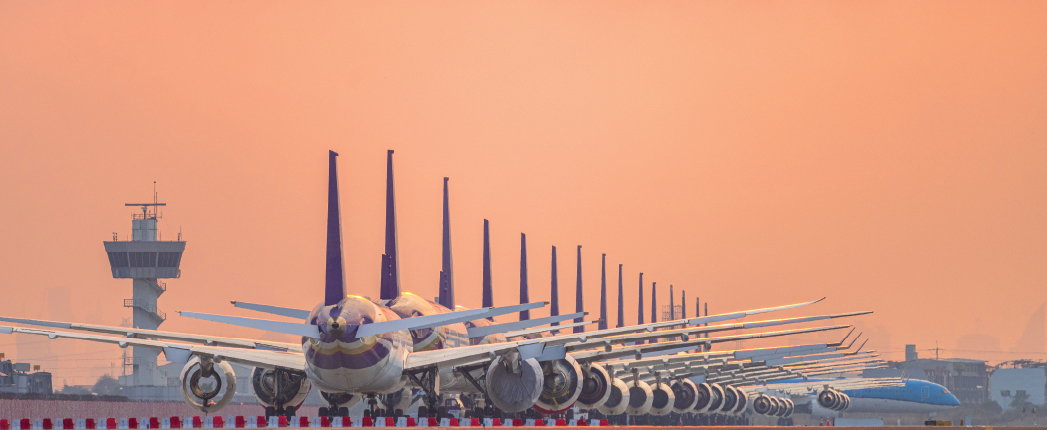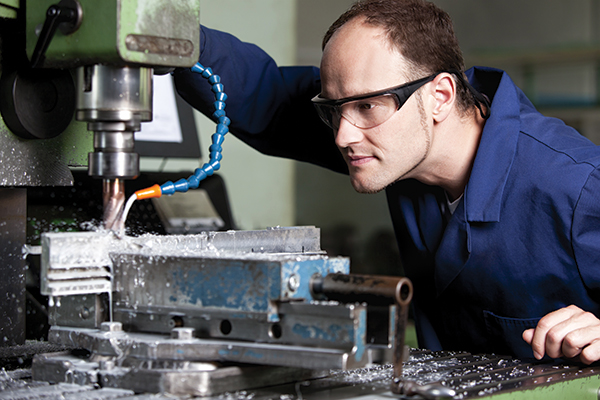
The COVID-19 pandemic—and other factors, like severe weather—forced temporary shutdowns in a variety of industries. Because of this downtime, valuable equipment and the lubricants that keep that equipment running smoothly sat idle until operations could resume safely. How does extended downtime affect lubricants, and what does it take to get idled equipment up and running again?
First, it is vital to understand what can happen to lubricants in equipment that has been idled for extended periods of time.
Sagar Vira, vice president heavy-duty and industrial sales at Castrol India Ltd., explained that industrial products are categorized into metalworking fluids and maintenance lubricants, like greases, hydraulic fluids and gear oils. “Across both categories, idled equipment may cause several challenges in the form of rusting and corrosion of critical parts of the equipment,” Vira said.
For instance, equipment “filled with water-soluble coolants that lie unused for more than a week have the potential to corrode, smell and pose safety risks,” he said. This often occurs because bacterial growth causes the used idle coolant to turn acidic. Water-soluble metalworking fluids also degrade over time due to insufficient air circulation.
“Reviving the health of these lubricants is extremely difficult once they deteriorate beyond certain limits,” Vira said.
Neat metalworking fluids offer better stability, unless they are cross-contaminated with other oils or water. “Once contaminated, they pose significant threat in the form of rusting of the equipment, which may require parts or the entire machinery to be replaced,” Vira said.

As for maintenance lubricants, extended downtime can be equally damaging. These lubricants can attract and accumulate humidity and other contaminants, like dirt, while the equipment is idle. “The situation is further compounded by non-functional centrifuges, vacuum dehydration systems and filtration systems, which damage the bearings and gear boxes,” Vira said. “Furthermore, the presence of water and dirt degrades and oxidizes the lubricants, leading to shorter service life for the equipment. The byproducts of the oxidation of the lubricant additives are also corrosive in nature.”

Adam McMurtrey, maintenance and reliability field engineer at ExxonMobil, agreed that the primary threats to out-of-service industrial lubricants are humidity and contamination. “You’re not operating the equipment; you’re not running the oil through a filtration system like you typically would,” McMurtrey said. “If you can prevent those ingresses—the water and the contamination—then you’ve really done most of what you need to do.”
Water and other sources of contamination in lubricants have been of particular concern to the airline industry, as the steep pandemic-induced drop in air travel forced airlines to ground many of their planes.
|
“You’re not operating the equipment; you’re not running the oil through a filtration system like you typically would. If you can prevent those ingresses—the water and the contamination—then you’ve really done most of what you need to do.”
– Adam McMurtrey, ExxonMobil
|
Ed Barnes, global chief engineer of aviation lubricants with ExxonMobil, said: “The number of aircraft grounded and in storage due to the pandemic is unprecedented. When an aircraft is parked for an extended period, there is increased risk for deterioration of its components and structure if preservation procedures are not followed. Engine lubricants, in particular, are susceptible to increased water contamination any time an aircraft is parked for an extended period.”
Ester-based aviation turbine lubricants, for example, absorb water from the atmosphere at any opportunity. “Water contamination will cause hydrolysis of the esters to occur, which forms acids likely to damage engine components,” Barnes said. “The longer the oil is exposed to the atmosphere, the more water it absorbs, increasing the risk of forming acids.” The rate at which water contamination occurs is dependent on temperature and ambient humidity.

Hydraulic systems in aircraft full of phosphate-ester fire-resistant hydraulic fluid are also vulnerable to water contamination, but not at the same level as engines because they are sealed, he said. However, the risk of contamination increases drastically if a hydraulic system is open for maintenance during storage. If the system is open to the atmosphere, water will degrade the fluid, and acid will damage components. “The fluid condition should be known before storage and after maintenance,” Barnes said.
Ready for Restart
There are several ways to ensure that lubricants and equipment are in sufficient shape to resume operations. Vira emphasized the importance of performing proper checks prior to resuming regular operations. “In the absence of proper checks before restart, equipment may be susceptible to corrosion of critical components, non-performance of lubrication leading to gearbox and bearing failure, and accelerated damage to the equipment,” Vira said. “Another challenge is fretting corrosion of standby equipment caused due to vibration from nearby sources.”
McMurtrey agreed, citing a survey that ExxonMobil developed to get manufacturers thinking about their current checks and how they can be improved. The survey helps “manufacturers understand what to be thinking about during the pandemic because most of them had to shut down in kind of an emergency way,” McMurtrey said. “It is a comprehensive look at what you need to do to make sure you shut down properly. How do you keep shut down safely? Do you have procedures in place to start back up?”

Another way to ensure that lubricants and equipment are ready for operation is through oil analysis. “I would check the cleanliness of the oil,” McMurtrey said. “You really need to understand how your equipment is doing, and the best looking glass we have into your equipment is the oil that surrounds it. So we run all of our oil samples through our white coat lab, and that tells us if there’s any water or contamination in the oil or wear particles from the equipment itself.”
Vira agreed, explaining that a comprehensive analysis of the oil through “used oil analysis either on-site or in a laboratory is crucial toward understanding the useful life of the oil.” He added that Castrol India offers a service called Castrol Labcheck, which analyzes used oil for comprehensive insight into fluid condition by monitoring a wide range of critical parameters to enhance system and machinery performance. It also assures that the fluid in question is within proper quality control limits.
Which factors can be measured to indicate the health of a lubricant?
Vira explained that “for a water-soluble coolant, bacterial growth and drop in pH level are the key indicators that reflect the need for replacement. Likewise, cross-contamination, moisture content and total acid number are key indicators in neat metalworking fluids.”
Similarly, the total acid number of maintenance lubricants can indicate to operators the lubricant’s health. The TAN gauges the oxidation of the lubricant’s base oil and indicates the water content of the oil and the presence of any contaminants.
The same metrics are helpful in diagnosing the health of aviation lubricants, too. “ExxonMobil recommends that our airline customers periodically test the engine oil in parked aircraft for water (parts per million) and monitor total acid number and compare these to the oil condition limits set by the engine OEM,” Barnes said. “If the lubricant is contaminated with water for an extended period, eventually the TAN value will exceed OEM-recommended limits, indicating it is time to change the lubricant. Some engine OEMs have fluid condition limits that stipulate a water level less than 1,000 ppm and a TAN of less than 2.0. These are good general guidelines, but airlines need to consult their engine manuals for specific guidance.”
Based on what is discovered about lubricant condition during oil analysis, re-lubricating may be required. “Re-lubrication entails checking the health of the existing lubricant by oil analysis, topping up the lubricant in case of a drop in lubricant levels, running the same through a filtration system and vacuum dehydration to take care of contaminants and humidity, amongst other factors,” Vira said.
He noted that both equipment and the lubricants used within them have different life and degradation cycles depending on the type. Additionally, multiple factors—including ambient arrangements, time the equipment has been used before being idled, type of breather in the system and sealing arrangements—can affect re-lubrication needs.
“The re-lubrication process also includes draining the old lubricants out, followed by flushing the equipment—preferably with the same lubricant that will be used in service—and checking the strainers and filters,” Vira said. “Ideally, the equipment should be started with ‘no load’ before putting it in operation.”
Barnes offered a few tips on keeping aviation lubricants in flying shape. “Occasionally ‘exercising’ engines while grounded can bring the oil to operating temperature, help evaporate the water, and renew the film of protective additives on the surfaces of engine components,” Barnes said. “Airlines should follow OEM guidance regarding how often to operate engines that have not been put into long-term storage, with preservative chemicals added to the lubricant. Generally, this involves engine operation at least once per month, sometimes more frequently.”
|
“As airlines prepare their planes to take flight again, it’s critical to test the engine oil and evaluate the ppm and TAN, change the oil if needed, and to continue exercising the engine.”
– Ed Barnes, ExxonMobil
|
Much like exercising the engines, airline technicians can also exercise the wheels by moving the airplane. Barnes explained that “rolling tires also renews the grease coating on the associated wheel bearing components, which helps protect the bearings. This is important because wheel bearings are only re-greased when completely removed from the aircraft. Moving the airplane also flexes the landing gear, which renews oil and grease films on landing gear struts and linkages.”
However, he stressed that there is no substitute for oil analysis. “As airlines prepare their planes to take flight again,” Barnes said, “it’s critical to test the engine oil and evaluate the ppm and TAN, change the oil if needed, and to continue exercising the engine.”
Lubricants Save Money
Not only does performing proper checks and maintenance keep operations running smoothly, but it can also offer significant cost savings, McMurtrey said, because lubricants that are in good shape can help to prevent costly equipment failure.
“Through PM audits, lubrication inspections, storage and handling studies, plant audits, lubrication studies, optimized oil life studies, energy efficiency improvements, other engineering services, and most importantly improved uptime, we documented $145 million in savings for [our clients] across all productive sectors in 2020,” McMurtrey said.
Sydney Moore is managing editor of Lubes’n’Greases magazine. Contact her at Sydney@LubesnGreases.com